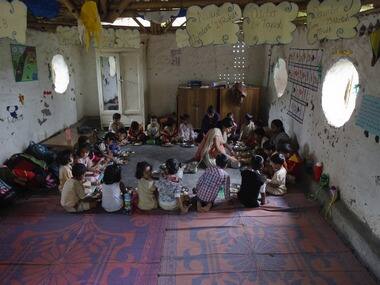UNESCO has criticised the Indian school curriculum, saying that it is unrealistic and much too ambitious. The findings were reported in the ‘Education for All’ Global Monitoring Report 2014. “Vietnam’s curriculum focuses on foundation skills, and is closely matched with what children are able to learn and pays particular attention to disadvantaged learners. By contrast, India’s curriculum, which outpaces what pupils can realistically learn and achieve in the time given, is a factor in widening learning gaps,” the report reads, according to a report in the Times of India. [caption id=“attachment_1366691” align=“alignleft” width=“380”]  Representational image of classroom. Reuters image[/caption] The GMR says that 90% of Indian students emerge illiterate after completing up to four years of school. After 5-6 years in school, around 30% remain illiterate. The Indian education story as told by a recent report by NGO Pratham - its sixth Annual State of Education Report (ASER) - is not much different. West Bengal, Uttar Pradesh, Bihar, Manipur, Madhya Pradesh and Jharkhand have attendance figures of less that 60 per cent, according to a report in the Telegraph newspaper. Besides this, achievement gaps between government and private schools continue to widen. A paltry 33 per cent of Class III children in government schools can read at least a Class I textbook, compared to 60 per cent of children in private schools who can do the same. But on the bright side, enrolments in the 6-14 age group have increased everywhere, for both boys and girls, and drinking water and toilet facilities in schools have risen too, though not in line with enrollments, says the Hindu report. “India has been in the list of those 10 countries that have progressed very fast in being able to reduce the children drop-out rate in recent years, but it has also created a learning crisis. Nearly 250 million children across the globe fail to learn the basics, one-third of which are based in South and West Asia,” says a report in India Today. India devotes around 10.5% of its total government expenditure on education. But while rich states like Kerala spend around $685 per pupil per year, in poorer states like Bihar expenditure is only around $100.
Unesco has criticised Indian school curriculum, saying that it is unrealistic and much too ambitious.
Advertisement
End of Article


)

)
)
)
)
)
)
)
)



